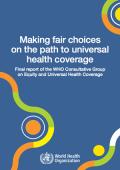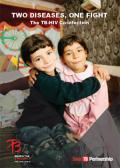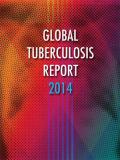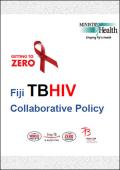What's New
Displaying results 3121 - 3130 of 4914

Resource | Publications,
The paper provides information on the prices paid by 20 middle-income countries for adult and paediatric formulations of antiretroviral treatments recommended by WHO. It links this information with an analysis of the intellectual property situation of the selected medicines taking into account existing license agreements as well as compulsory licenses, and includes data and general information on a number of other determinants of prices and availability of ARVs, including tariffs, markups and taxes, as well as the regulatory status.

Resource | Reviews and Snapshots,
By 2020, 90% of all people living with HIV will know their HIV status. By 2020, 90% of all people with diagnosed HIV infection will receive sustained antiretroviral therapy. By 2020, 90% of all people receiving antiretroviral therapy will have durable viral suppression. When these targets are achieved, at least 73% of all people living with HIV worldwide will be virally suppressed—a three-fold increase over current estimates of viral suppression. Modelling demonstrates that achieving these targets by 2020 will enable us to end the AIDS epidemic by 2030.

Resource | Publications,
HIV treatment is a unique tool in the AIDS response, preventing illness and death, averting new infections and saving money. As hopes for ending the AIDS epidemic depend in large measure on the world’s ability to provide HIV treatment to all who need it, in a rights-based approach, final targets for universal treatment access are critical.

Resource | Laws and Policies,
Prevention of mother to child transmission of HIV has contributed to the reduction in the number of vertical transmission in Fiji. There has been an increasing focus on prevention of parent to child transmission (PPTCT) with the provision of HIV testing to pregnant women attending antenatal clinics (ANCs). Globally and nationally we have seen PPTCT services reduce HIV infections in children.
The need for prevention of transmission of HIV from parents to child is paramount for the Ministry to achieve its targets of zero new hiv infections which prevents transmission of HIV from parent to child, and secondly to reduce maternal deaths secondary to any AIDS related Illness, which contributes to Millenium Development Goal 5 and zero AIDS related deaths goals by UN.

Resource | Publications,
Universal health coverage (UHC) is at the center of current efforts to strengthen health systems and improve the level and distribution of health and health services. This document is the final report of the WHO Consultative Group on Equity and Universal Health Coverage. The report addresses the key issues of fairness and equity that arise on the path to UHC. As such, the report is relevant for every actor that affects that path and governments in particular, as they are in charge of overseeing and guiding the progress toward UHC.

Resource | Fact Sheets,
TB is the leading cause of death among people living with HIV (PLHIV). One in five HIV-related deaths is caused by TB. Untreated TB in people with HIV can lead to death in weeks.
It is estimated that one-third of the 40 million people living with HIV/AIDS worldwide are coinfected with TB. Around 75 per cent of coinfected patients live in the African Region. People living with HIV and infected with TB are 30 times more likely to develop active TB disease than people without HIV. TB is also more difficult to diagnose in people living with HIV.
The new Post-2015 Global Strategy and Targets For Tuberculosis Prevention, Care and Control, strives to end TB as a global pandemic (an average less than 10 tuberculosis cases per 100 000 population) and to cut the number of deaths from TB by 95% by 2035.

Resource | Publications,
Antimicrobial resistance (AMR) represents a growing threat to global public health and security. New resistance mechanisms continue to emerge and spread, undermining the world’s ability to treat common infectious diseases. Surveillance to monitor the emergence and spread of drug resistance is a crucial component of the global strategy to combat AMR.
This special supplement to the Global Tuberculosis Report 2014 marks the 20th anniversary of the Global Project on Anti-Tuberculosis Drug Resistance Surveillance and its TB Supranational Reference Laboratory Network. It remains the oldest and largest project on AMR surveillance in the world and guides the response to the epidemic of multidrugresistant tuberculosis (MDR-TB) at national and global levels.
The first half of the document highlights the progress made in surveillance of anti-TB drug resistance between 1994 and 2013 as well as recent innovations. The second half of the document profiles the global status of the response to the MDR-TB epidemic, which remains a mix of success and failure. Following WHO’s pronouncement in 2013 that MDR-TB represented a public health crisis, five priority areas for action, from prevention to cure, are defined.

Resource | Publications,
Tuberculosis (TB) remains one of the world’s deadliest communicable diseases. In 2013, an estimated 9.0 million people developed TB and 1.5 million died from the disease, 360 000 of whom were HIV-positive. TB is slowly declining each year and it is estimated that 37 million lives were saved between 2000 and 2013 through effective diagnosis and treatment. However, given that most deaths from TB are preventable, the death toll from the disease is still unacceptably high and efforts to combat it must be accelerated if 2015 global targets, set within the context of the Millennium Development Goals (MDGs), are to be met.
TB is present in all regions of the world and the Global Tuberculosis Report 2014 includes data compiled from 202 countries and territories. This year’s report shows higher global totals for new TB cases and deaths in 2013 than previously, reflecting use of increased and improved national data.

Resource | Guidelines,
Country health information systems provide a rich source of data on the burden of disease caused by tuberculosis (TB) and the effectiveness of programmatic efforts to reduce this burden, both of which are crucial for public health action. However, the available data are often underused, or not used at all. At least in part, this may reflect the absence of clear guidance on recommended approaches to the analysis of such data.
This handbook is designed to address this gap through detailed practical examples of the analysis of TB surveillance data, in particular TB notification data, data from surveillance of anti-TB drug resistance, and mortality data compiled in national vital registration systems. It starts from the most basic kinds of analyses, and progresses to the description of more challenging topics such as the estimation of disease burden using multiple sources of evidence, including data from special surveys.

Resource | Publications,
This policy document focuses on a collaborative move for the TB and HIV Units of Fiji to have activities that address the interface of the tuberculosis and the HIV and AIDS epidemics either it be from the preventative or the holistic care of patients who are co-infected.
Human immunodeficiency virus (HIV) is the single greatest risk factor for the development of tuberculosis (TB) disease and TB is the commonest opportunistic infection in people living with HIV infection. The increasing prevalence of HIV infection in Fiji will present new and ongoing challenges to the national control of TB at all levels.
This document aims to provide the Public and Private health sectors in Fiji to ensure that appropriate preventative, treatment and care of all TB/HIV patients has been delivered in an efficient manner.





